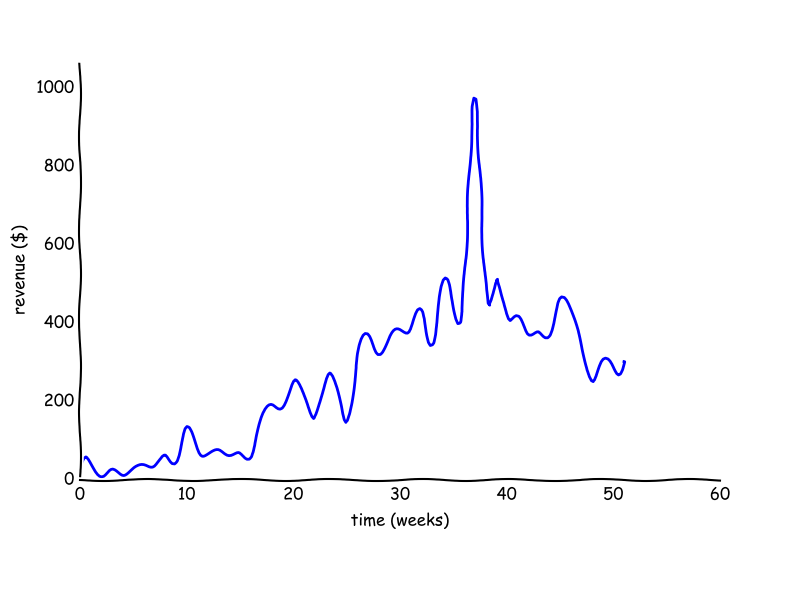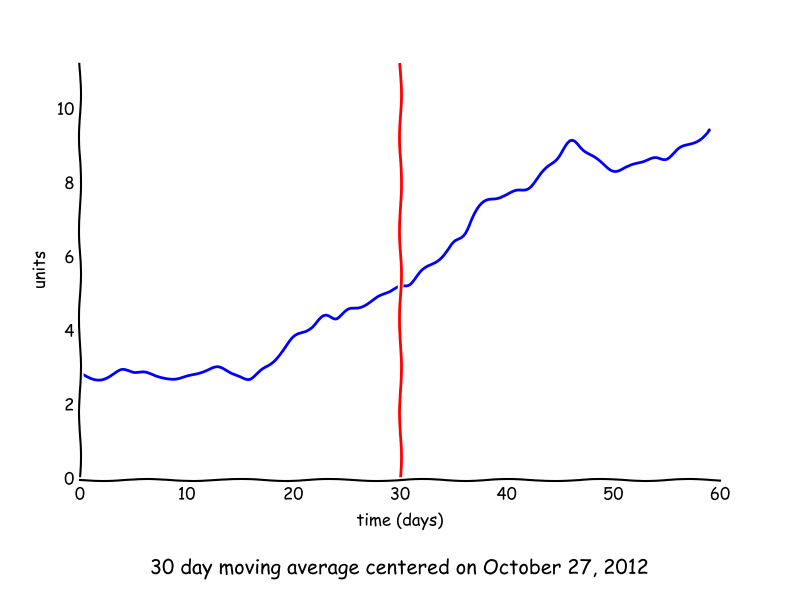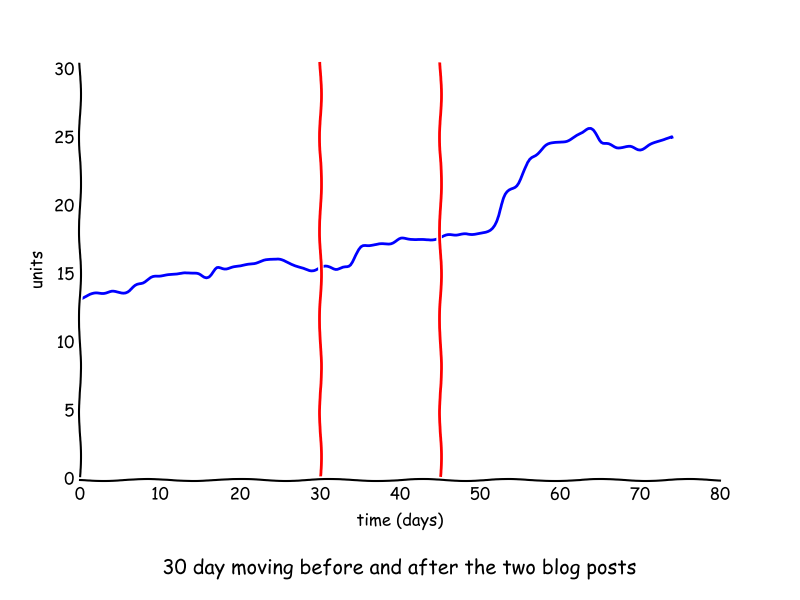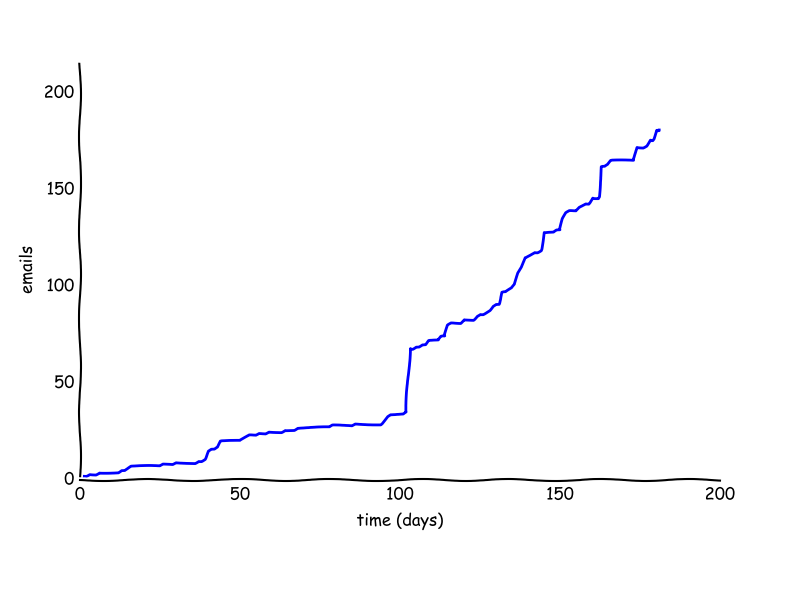Gus on the Go: Year One
/This is the start of a series of posts that have been trapped in my head for a while. While attending the Release Notes conference, my conversations with several people[1] encouraged me to finally get my thoughts down.
Most indie devs are great on the technical side, but a little lost when it comes to business and marketing. I wanted to share our experiences to help our community and encourage more transparency and openness among us. This is not a how-to manual. Just a catalog of what we’ve done and, usually, the thinking behind it.
I am releasing sales figures (with my partner’s permission), but I don’t expect all people to follow suit. We were comfortable with doing so and felt it could round out the story a bit.
Also, if you’re looking for it, I’m not going to complain about Apple or the AppStore. All mistakes are my own.
My partner, Alice, and I are currently working on a sequel app to our Gus on the Go language learning series. The new app has a different business model and incorporates a ton of lessons learned from the first app. Before we get to the new app, I wanted to establish the background. Over the next 3 posts, I will discuss in (hopefully interesting) detail each of the first three years of Gus on the Go.
<elevator pitch>
Gus on the Go is a language learning adventure that teaches kids aged 2–6 about 90 words in a new language in an immersive way using lessons, reviews, and games.
</elevator pitch>
We released our first two languages in the Gus on the Go series on July 13, 2012 — English and Spanish. Each language is a separate app, which has positives and negatives[2].
During the first year of Gus we released 15 languages (ergo apps), which represent over half of our current Gus on the Go catalog. Some are good sellers, some are bad. Due to the number of apps, I’m just going to report sales across all apps.

Notice our completely-by-the-book launch curve:

Ha! Ok, so that’s not what we saw. Instead, we grew our sales and revenue numbers slowly and over time.
Not knowing a thing about marketing, we just put the first two languages in the AppStore and expected people to find us. Mistake #1. Classic rookie, gold-rush thinking.
Shortly after we launched Gus on the Go with little or no marketing plan, we realized that we needed to do something in order for people to find us. We started putting together some ideas for how to market the app.
However, we consciously put off implementing these ideas in favor of releasing more languages. Mistake #2. The thinking at the time was that any marketing effort would be wasted if we did not have more language options available for potential customers. We were actually worried that:
- our marketing would work
- people would come to our site
- not find the language they wanted
- and leave never to come back
This line of thinking was ridiculously irrational. For starters, the two languages we initially released make up 34% of our total sales to date. This is due to the strength of the US market. And people in the US want to learn Spanish[3]. Additionally, to mitigate these fears, we could have put up a “coming soon” page on our website to hint at languages we were going to release – with a prompt to sign up for an email list to be notified upon release!
Mommy Bloggers
When we finally started marketing, our plan was to approach mommy bloggers. We got our first break when Alice contacted a blogger she knew with a popular food blog. Alice convinced her to do a write up on Gus on the Go, which appeared on October 27, 2012.
Her blog wasn’t a 100% fit, but it got us off the ground because she was a trusted voice with over 1 million page views per month. Sales went from an average of 2.9 per day for the 30 days leading up to the post to 8.8 per day for the 30 days after the post.

Amazing what a difference a little marketing does.
Our next reviews came fairly close together in February of 2013, so it would be hard to extract the long term effect each individual post had on our sales. We first had a review written up on another trusted mommy blog, that is no longer around. That gave use a nice spike of sales directly after and, of course, helped with SEO.
Shortly after, we got a big break and were featured on Cool Mom Tech. Alice was persistent and had contacted them several times. It wouldn’t have happened had we not been actively approaching bloggers about our app. Much like in other blogging or online media areas, the mommy blogger world tends to feed itself. So getting a couple of writeups makes it much easier to get more writeups.
Prior to these two reviews, our daily average sales went from 14.9 per day over the previous 30 days to 23.0 per day over the following 30 days

I should also mention, that Alice really spent a lot of time researching the bloggers we approached. She read their entire blogs and crafted very personal emails to them if she thought we were a good fit for each other. I recommend you read those last two sentences again.
When done right, marketing is tough, but works.
Growing a Mailing List
Early in January of 2013, we decided to try another marketing idea. Based on what she had seen on Pinterest and other craft websites, Alice hypothesized that we could drive people to our website if we offered free supplemental learning aids in the form of printable crafts. Once on our site, we would have a chance to upsell the Gus on the Go apps.
Since we weren’t exactly sure how to do this well, we decided we should at least capture emails to give us future opportunities to upsell. The idea was to require an email address to receive the desired printable. At the same time, they would be signed up to our newsletter.
Here is how our email list grew until the end of that first year:

Not tremendous growth the first 6 months, but it’s a good thing we started. We now have an email list over 6,000 strong to inform when updates and new apps (Gus 2!) are released. Additionally, since the printables are language based, we know which languages each newsletter subscriber is interested in. This is valuable information as we can send pertinent information to each person, which, theoretically, increases open rates. Our last newsletter had an open rate of 21.3% compared to 15.6% industry average for software and web apps[4].
We currently don’t use our email list enough, but there are plans in the works to change this once Gus 2 is getting ready for release.
Our email list is also a way to try and keep in touch with our customers and potential customers. I know this sounds obvious, but it’s that much more important to iOS developers, since we don’t automatically know who our customers are.
Facebook and Twitter[5]
While we did the obvious and easy thing to set up Facebook and Twitter accounts, we don’t use them to their full potential.
On Facebook, we’ve tried things like contests and giveaways, but most of our engagement has been with friends of ours.
We’ve mostly used our official Gus on the Go Twitter account to connect with mommy bloggers and customers, which has been good, but, again, we utilize it way too little.
Year One: By the Numbers
- Sales: 4,478
- Revenue: $14,396
- 1* Reviews: 1
- 2* Reviews: 0
- 3* Reviews: 1
- 4* Reviews: 4
- 5* Reviews: 50
- Languages Available: 15
- Total Apps: 31 [6]
- Email List Size: 183
Where Do We Go From Here?
In my next post, I’ll continue to talk about the business side of Gus on the Go and show more fun graphs from Year Two[7]. Additionally, I’ll go into detail on hiring a marketing agency and our Android release. I’m sure you’re on the edge of your seat.
In the meantime, you can find me on Twitter @yonomitt. I’m sure I’ll tweet when future posts are up.
Have a nice day,
Yono
-
Thanks @parrots, @8BIT, @subdigital, and @shanezilla! - whether you know it or not ↩
-
I’m sure I’ll get to these in detail in a future blog post. ↩
-
Overall, the US market is about 71% of our total sales. 96% of our Spanish sales are in the US. More on geography breakdown in my Year Two post. ↩
-
According to MailChimp ↩
-
We also have a Google+ account, but please don’t hold that against us. Everyone was doing it! I swear! ↩
-
Gus 1 launched on Android about 2 weeks before the end of year 1, but that’s a story for the next post. Oh and as a test, 1 language went up on Amazon, too. ↩
-
Spoiler alert: Revenue does go up! ↩
